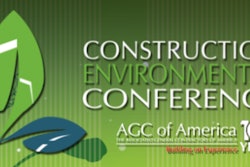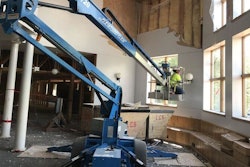
You might ask why we need another building certification, and the answer is simple: WELL takes sustainability a step further. WELL provides preconditions and optimizations focused on improving the health of the people within the built environment.
What is WELL?
According to the WELL Building Standards, WELL is a performance-based system for measuring and certifying features of the built environment that impact human health and well-being, through air, water, nourishment, light, fitness, comfort, and mind. On the other hand, LEED focuses on creating cost-saving, green buildings, but LEED-certified projects also already have some credits set up for WELL preconditions and optimizations; this crossover or sharing is called “Crosswalks.” WELL marries LEED’s best practices in design and construction with evidence-based medical and scientific research, essentially harnessing the built environment as a vehicle to support human health and well-being.
The “Crosswalks” are one way to improve a company’s previous investment in LEED certification while being forward-thinking, and evaluate WELL certification as a way to make continual improvement decisions. This is why LEED and WELL fit together so nicely, because it takes a building that is already sustainable, efficient, and cost-saving, and adds in elements to support those who work within the building.
WELL certification ensures that a company has a healthy workplace to support a healthy community, which in turn supports a healthy business. Businesses that are WELL certified prove to employees that the company cares about them and their well-being and can increase retention since people feel valued and enjoy the space in which they work.
There are three important things businesses should keep in mind when pursuing WELL certification:
1. It’s important to understand your employees in order to determine what WELL practices you need to put in place. Many WELL practices are personality-driven and the concepts you would implement for an office building are not the same as you would use in a manufacturing facility.
2. Get the human resources (HR) department involved from the beginning. WELL is a policy-driven program and it considers how employees should act within a certain space. These are policies the HR department needs to develop to ensure the company is able to meet the WELL Building Standard.
3. Lastly, WELL needs to be considered from the very beginning of the design process, even before ground is broken on a project. It’s much easier to construct a building that has the right amount of natural light and proper HVAC system to allow for outside airflow from the ground up, than to redesign or remodel an existing building.
Although starting from scratch is ideal for implementing WELL, it’s not always an option and WELL recognizes that. WELL offers Platinum, Gold and Silver level certification, as well as a Core & Shell certification. These multiple levels allow companies to pursue WELL while still remaining within their budgets. WELL also encourages making updates for the good of the whole organization, not just a few members.
For example, say a company is weighing the options between updating the HVAC system to meet WELL standards for $200,000 or adding a workout center for $20,000. When looking at dollars, some companies may lean toward the cheaper option, but that’s not necessarily the best way to go. Installing the new HVAC system would impact every single employee within the company since they all breathe that air, while building a workout center would only benefit the employees who actually use it.
Overall, WELL provides a process to help businesses incorporate a new way of designing a building, one focused on improving the health of its employees as they complete daily tasks and activities. With a program that strives to improve quality of life, WELL allows for creating both positive and life-enhancing design decisions directly connected to the built environment.
To learn more about the WELL program, visit www.wellcertified.com.
About the author: Chad Pingel is a sustainable services manager for Miron Construction Co., Inc.


















